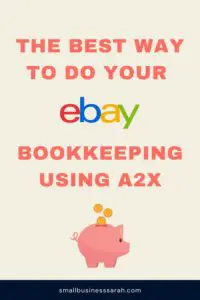If you’re a bookkeeper, there will likely be situations when you need to review the work of another bookkeeper, understand what they did, and determine where things stand. This might happen if you’re working with a new client who was previously working with another bookkeeper or if you begin to hire bookkeepers to work for you in your bookkeeping business. In these situations, you need a way to check their work without reviewing every single entry they made.
In this post, I’ll share some tips and tricks that I use to give myself a quick overview of where things stand and a quick way to identify errors that may have occurred. This is certainly not the only way to go about reviewing. You could certainly go more in-depth, looking at every single transaction and how it was categorized, but my method is a high-level review that allows you to move quickly but also catch any major mistakes.
Step 1: Last Date Reconciled
When I begin to review the bookkeeping work done by someone else, one of the first things I want to know is the last reconciliation date of all Balance Sheet accounts. I use the Accountants tool, and from there, I can get a quick lay of the land of what balance sheet accounts the client has and the date the account was last formally reconciled. This gives me a good idea of whether things are up to date.
Step 2: Check the Registers
Next, I head to the registers. It may surprise you, but I really don’t take a look at the categorized transactions from the bank feed page. I tend to take a higher-level overview, and for me, looking at the registers is a bit more helpful, especially if there are nontraditional accounts.
As I go through the various registers, I’m looking for reconciliations that might have been done incorrectly. Oftentimes people who don’t know how to reconcile properly will have a bunch of unreconciled items mixed in with their reconciled transactions. So if I see a lot of Cs (for cleared) in the register, mixed up along with a lot of the Rs (for reconciled), then I know that we have a problem–even though it says it’s reconciled.
Next, I go through the holding account registers to see where they stand. I’m looking for balances that seem off or included transactions that don’t make sense. If monthly journal entries are posted to the holding accounts, I’m looking to see the date of the last journal entry, and the balance after that journal entry was posted. The holding accounts can tell you a lot!
Step 3: Balance Sheet Highlights
After I’ve checked all of the registers, I head to the balance sheet. I actually use the balance sheet for review purposes more than I use the profit and loss statement, which may surprise some of you. The balance sheet is really the most important tool to know if your bookkeeping is in good shape or not.
The Profit & Loss statement may tell you if an office supply was categorized in error as shipping supplies, that’s not a huge problem–the expense is still there. Those are the kind of mistakes that you might catch if you were doing a very detailed analysis of every item that was categorized. But that’s not what we’re going for here. We’re not looking to recheck every single item that was done in a bookkeeping month. We’re just trying to do a broad overview, and the balance sheet can provide information about things that have not been done or have been done incorrectly.
For example, if I see negative balances in an asset account, I would know there’s a problem. I would then go back and I would take a closer look at the registers and the holding accounts to understand whether these balances are correct or what mistake has been made that needs to be fixed. Often, it can be something like a missing journal entry.
In general, any negative numbers on your balance sheet are worth investigating (except any Owner’s Draw amounts in the Equity section). This also includes the liability section. A liability shouldn’t show up as a negative. If we see negative amounts there, then it’s time to dig in deeper to find the errors.
The next area I review on the Balance Sheet is sales tax. If the sales tax balance is growing and not being paid off, that’s something to look into. Or if there is a balance when there shouldn’t be. Now that Etsy is collecting sales tax for almost every transaction on their website and remitting the tax, there shouldn’t be a growing sales tax balance for Etsy sellers. However, this is not the case if they’re selling on other platforms, such as Shopify. Understanding where your client is selling and therefore what that means in regard to sales tax is an important part of this process.
Step 4: Profit & Loss
After I finish with the Balance Sheet, I head to the Profit and Loss report and scan it for reasonableness. For example, if there is a type of income that I’m expecting to see and I don’t see it, that can be a good catch. I’m also looking for amounts that seem significantly bigger or smaller than I expect. For example, sometimes you will see a negative in the expense section, and sometimes that’s normal if there was a return of an item and the timing is different. But that’s a clue to investigate.
Another area I tend to look at more closely after I scan everything for reasonableness is the taxes and licenses. I click on this account to make sure that the items shown here are not actually sales tax payments, state estimated payments, or federal estimated payments. These amounts belong on the Balance Sheet, not the Profit and Loss.
In addition, I usually review the online tools expense account for reasonableness. I check to make sure vendor names are being added. I’m not getting into the details in most of these categories because if, for example, an office supply got coded to legal and professional, it’s really not the end of the world because in total the net income is still fine. It’s the balance sheet that’s really going to provide insight into areas that might contain errors, and those balance sheet errors then tend to reflect on the profit and loss later.
Step 5: Profit & Loss by Month
The final step is to run a profit and loss by month. I generally don’t do this on a monthly basis if I’m reviewing another bookkeeper’s work, but it can be a helpful tool if you’re taking over a new client. This allows you to compare numbers for this year to last year. If there’s a big jump or big slump, that’s worth investigating.
Seeing the Connections
Doing a high-level bookkeeping review allows you to see how all the pieces work together. A negative holding account balance on the balance sheet is connected to why there’s no income value in another account. It’s all interconnected.
These are the main ways that I conduct a review, either for a client where I’m taking over from another bookkeeper, or a monthly review where bookkeepers have done some bookkeeping work and I need to check it. Checking for reconciliation dates, checking the registers (especially the unusual registers), and checking the Balance Sheet are the most helpful steps. If you’d like to see a walkthrough of my process, be sure to check out my video tutorial here.



